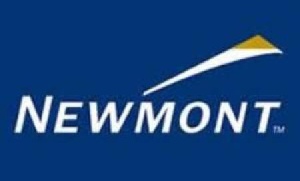Independent evaluations commissioned by Newmont examining the methodology and conclusions of WACAM-sponsored reports on the Ahafo mine were publicly released today.
The WACAM-sponsored reports, released in February, alleged that the Ahafo mine adversely impacted water sources and marginalized women in nearby communities, The independent evaluations found that the methodology used in the WACAM-sponsored reports were inconsistent with accepted methodology and cannot be relied upon as the basis for the reports’ conclusions.
The review of the environmental and health impact report was conducted by a team of experts from Newfields Company, an international consulting firm and Dr. K.P Asante of the Kintampo Health Research Center. The Marginalization of women report review was led by Frederick Giovanetti, a social impact Consultant and Dr. Michael Poku-Boansi of the Kwame Nkrumah University of Science and Technology.
In their environmental technical review, the independent assessors “found a number of deficiencies, errors, and misrepresentations that invalidate the scientific validity of these claims. Further, as described in the technical review, actual biomonitoring data for the communities within the Ahafo Mine area do not support the claims of health impacts to local residents.”
The technical review went on to state, “A primary deficiency in the Armah-Obiri Report is the lack of supporting data and information that typically are used to assess and support conclusions about the representativeness and validity of sample results. Specifically, the deficiencies relate to laboratory analytical reports; individual analytical results in a database; quality assurance and quality control plan; field data collection forms; chain-of-custody forms for environmental samples; field quality control samples; laboratory quality control results; and final verification and validation of sample results.”
In addition, the independent assessor highlighted technical errors and other problems associated with all four steps of the risk assessment process for human health assessment, namely data collection, exposure assessment, toxicity assessment, and risk characterization.
Regarding the assertions of marginalization of women due to the Ahafo mine’s activities, the independent assessors made the following observations:
•Newmont Ghana’s Agricultural Improvement and Land Access Programme intervention which was aimed at helping Project Affected Persons have access to land for farming did not marginalize women at the expense of their male counterparts and that a significant proportion of women benefited from the intervention.
•The incidence of Malaria, Upper Respiratory Tract Infection, Typhoid and Diarrhoea in the Asutifi North District cannot be directly linked to mining.
•There were no gender dimensions to water access, and that the improved water quality due to Newmont’s intervention has positively impacted both men and women equally.
•Due to the Newmont Ahafo Development Foundation’s micro-credit facility and Newmont initiated Women’s Consultative Committee Revolving Fund, women had better access to credit.
“Our commitment to transparently report the results of our ongoing environmental monitoring is central to our environmental stewardship and social responsibility philosophy,” said Alwyn Pretorius, Newmont’s Regional Senior Vice President, Newmont Africa. “We adhere to our commitments and legal obligations while working transparently with regulators and other stakeholders to responsibly manage our operations. Protecting and promoting the health and welfare of our employees and local communities is central to Newmont’s purpose, which is to create value and improve lives through sustainable and responsible mining.”
As recommended by the assessors, the company is working on an independent and participatory approach to water sampling made up of regulators, community stakeholders, and Newmont in order to enhance transparency and confidence in the environmental monitoring process.
Business News of Thursday, 7 September 2017
Source: Newmont

















